Lemon cream pie, buttered toast crust
Hi friends. I’m keeping it easy this week — no extended sourdough process (back next week with something fun!). This is a basic lemon pie, but with a twist, I’m making the crust from leftover bread: sourdough loaves, baguettes — even croissants if that’s what you have. The result is a textured crust with toasty depth, nuttiness, and an exquisite crunch. It’s a perfect counter to a puckery lemon filling with a cream topping that blends barely sweet whipped cream with sour cream. Gratitude to each of you for reading. Be well, Martin
From any room in our house you can follow clues to the bread board. While the path isn’t what it used to be — the kids are neater these days — you can still see them: crumbs. Follow and you’ll find soft salted butter, a serrated knife, a toaster, and a pile of breads in varying states.
For as long as they have been able to reach the counter I’ve watched our kids approach, assess the situation, and then move with the studied grace of an apex predator. They grab the loaf, grip it as best as they can, saw like crazy, then toast the slice and apply a heavy layer of butter. It’s a wonder they don’t permanently smell like buttered toast. It’s in their DNA.
But in spite of all the toasting, freezing, croutons, bread crumbs, lasagna (subbing toast for noodles), bread pudding, French toast, strata, and composting, sometimes bits remain. And I cherish them. Given the effort and resources it takes to get grain from field to flour bag to oven to table, they deserve our care. What to do with leftovers is not a problem, but a privilege.
Last week while looking at the bread pile I thought: could I turn stale sourdough into a pie crust? What if I cubed and toasted slices, then ground them up in the food processor as I would with a graham cracker or saltine crust? Would it taste like buttered sourdough toast?
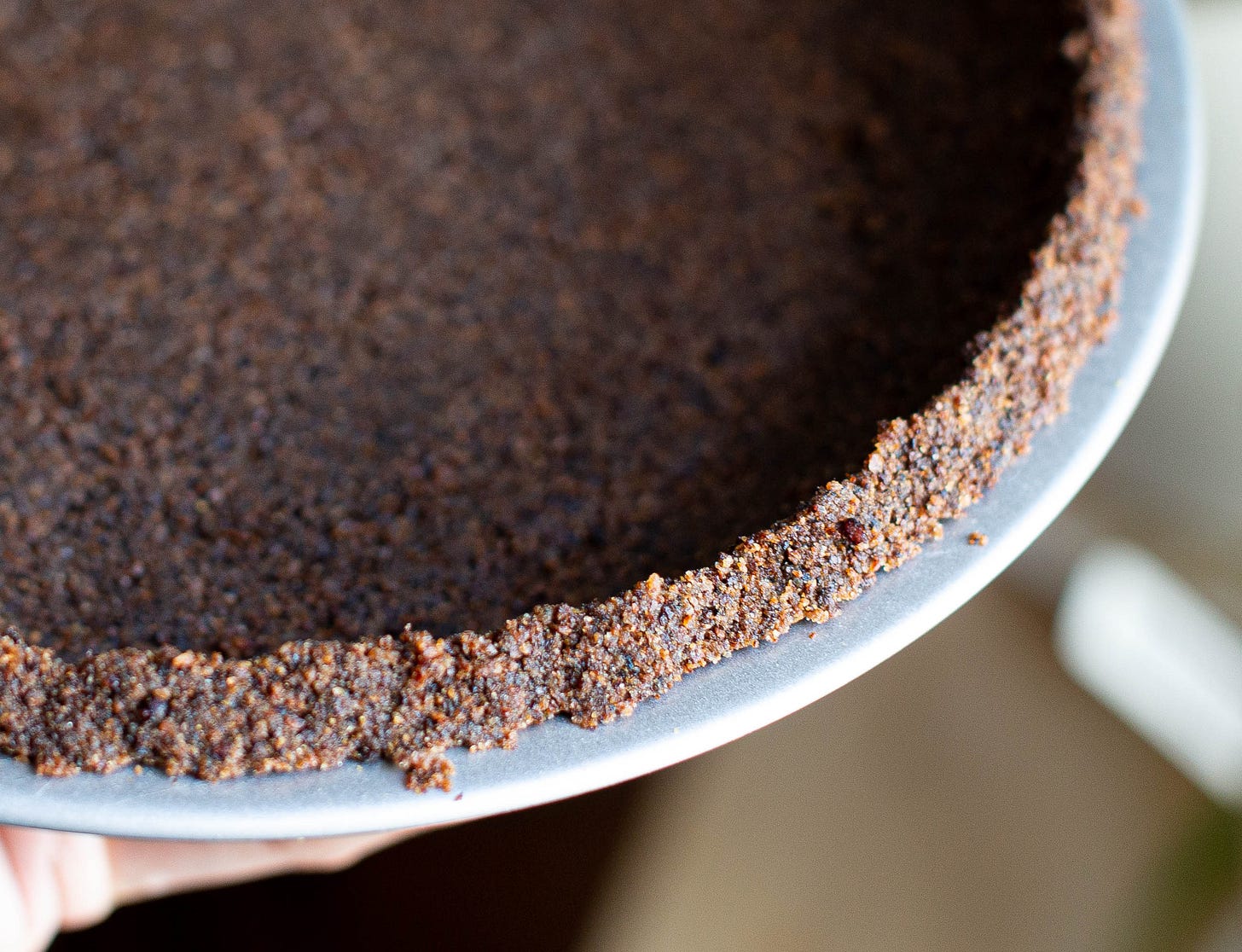
Yes. Here’s how to do it:
First, a couple process notes. I’ve tried using all manner of breads for the crumbs. From pain au levain to my recent black rice and sesame bread, baguettes, and even croissants. Each bring their own character to the crust. If you like robust, choose a bold loaf, if you want delicate, pick accordingly. I have enjoyed them all.
To make the crumbs I cut slices then cubes and spread them on a sheet tray to toast. I’ve found the stale bread to lose at least 30% of its weight during toasting, depending on the loaf. The goal of the toasting is to fully dry the bread while also adding a little color. If you’ve just baked something and the oven is still warm but empty, take advantage of that residual heat to toast and dry the bread. Or, if you’re preheating the oven and there’s an extra rack to spare, that’s a great time to toast. As I type this now, I have a baguette I made today cut open and placed on a cooling rack on top of the woodstove. It’ll be glassy-crisp by morning. Even if I don’t make pie I can process the crumbs in preparation.
Once the bread is toasted and bone dry I add it to my food processor fitted with a cutting blade and grind it down to the consistency of coarse sand. Depending on your processor you may need to do this in batches. The initial tests that I made were more coarse. While I liked that consistency for its incredible crunch, the feedback at my house was that it was too crunchy. I’ve processed subsequent batches to a finer consistency and everyone approves.
Buttered toast crust
Bread crumbs, 160g, (1 ¼ cups)
Butter, unsalted, very soft, 85g, (6T)
Sugar, brown, 33g, (2.5T)
Salt, 3g, (.5t)
Process the bread crumbs by first slicing the bread of your choice then cubing and baking in a low oven (250°F or so) until bone dry and crisp. In a food processor fitted with a cutting blade grind the bread to the consistency of coarse sand, processing in batches, if necessary.
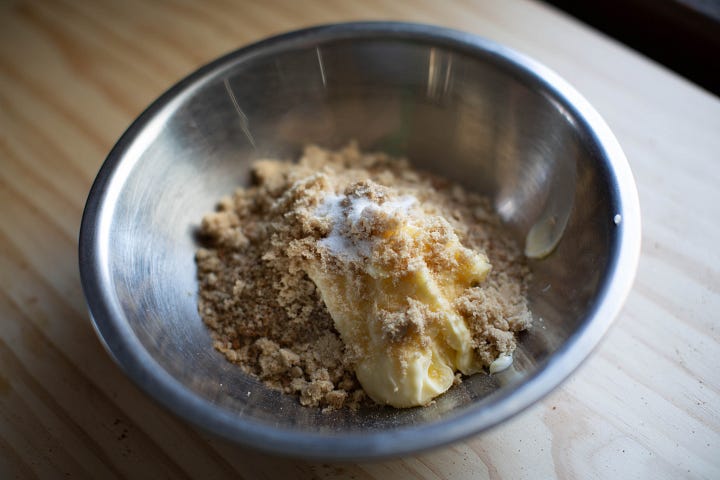
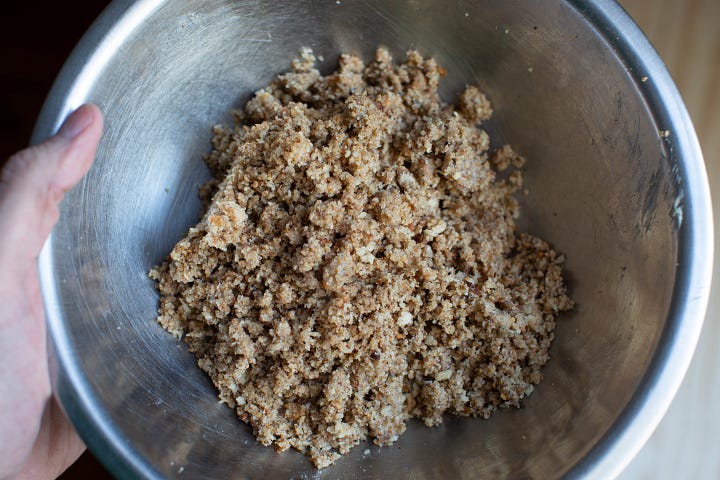
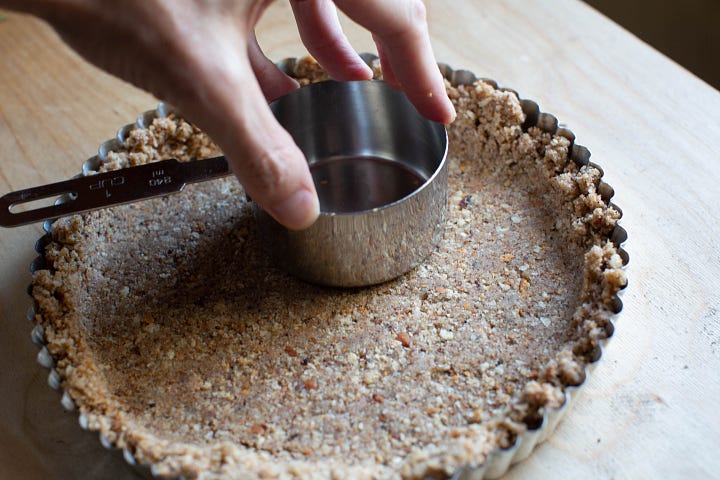
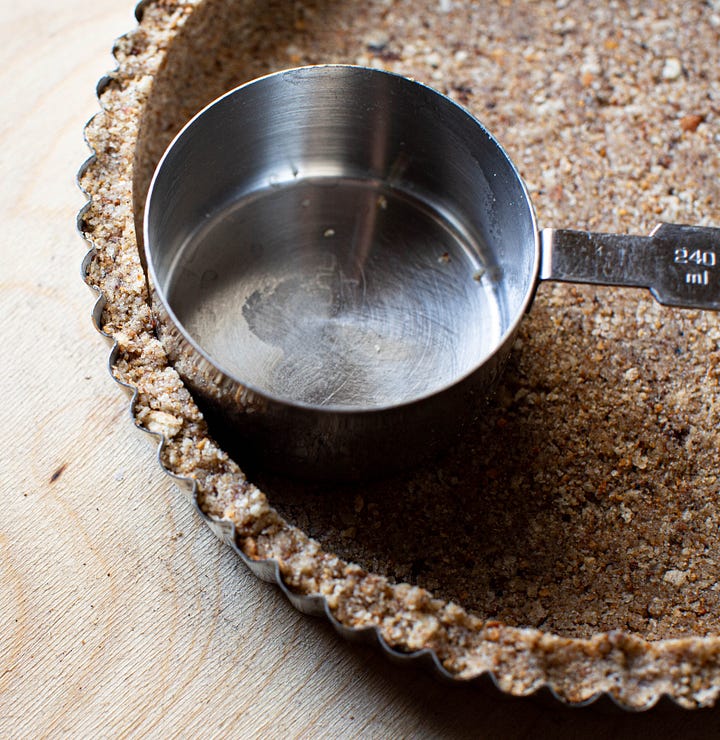
In a medium bowl combine the crumbs, softened butter, sugar, and salt, stirring and folding until homogenous and evenly moist.
Add the crust mixture to a 9” or 10” pie pan or 9.5” round tart pan. Distribute the crumbs evenly taking special care not to make the bottom too thick (using something sharp you can check the depth, 1/4 to 3/8” is about right). Using a metal cup measure or drinking glass, compress the crust, pressing firmly to form an evenly distributed crust. Bake on the middle rack of a preheated 350 degree oven for 10 to 12 minutes.
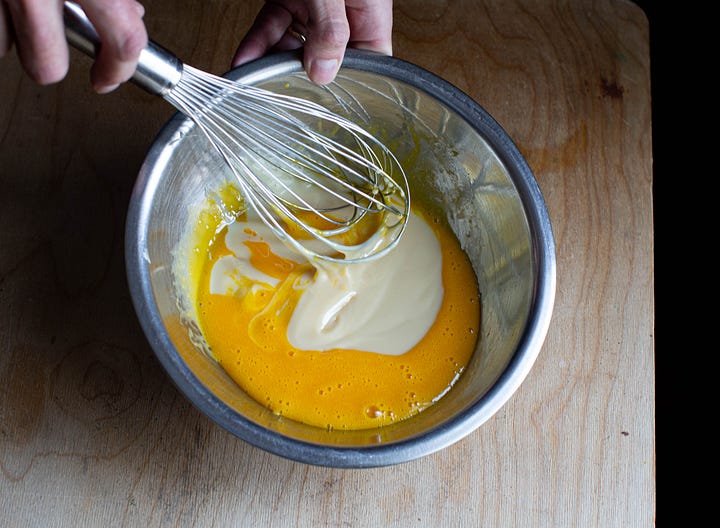
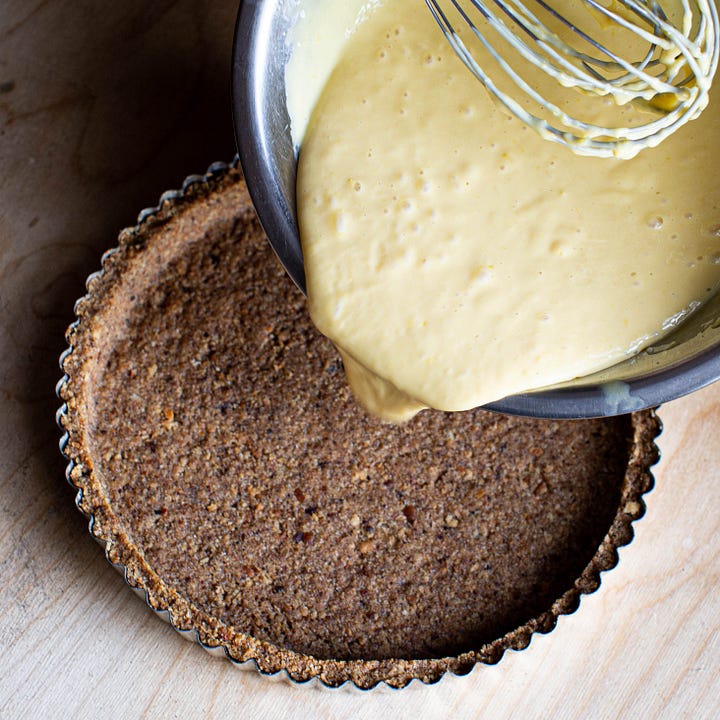
While the crust bakes begin the filling.
Egg yolks, 4
Condensed milk, one 14 oz. can
Lemon juice, 150g, (½ cup plus 1T)
Lemon zest, 9g (2T)
Salt, 1.5g, (¼t)
In a medium bowl whisk the yolks. Add the condensed milk and whisk to combine. Add the juice, salt, and zest and stir to combine. Pour into the crust and bake for 10 to 12 minutes. Remove when the center of the pie is still slightly jiggly.
Cool fully.
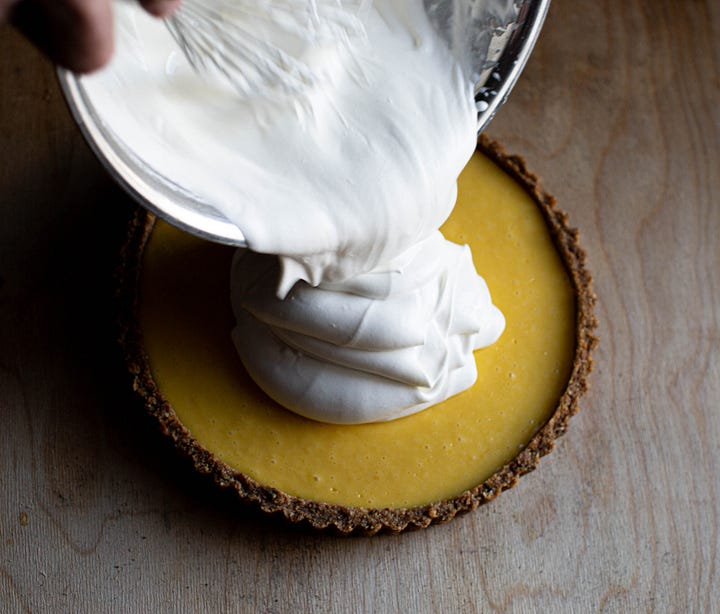
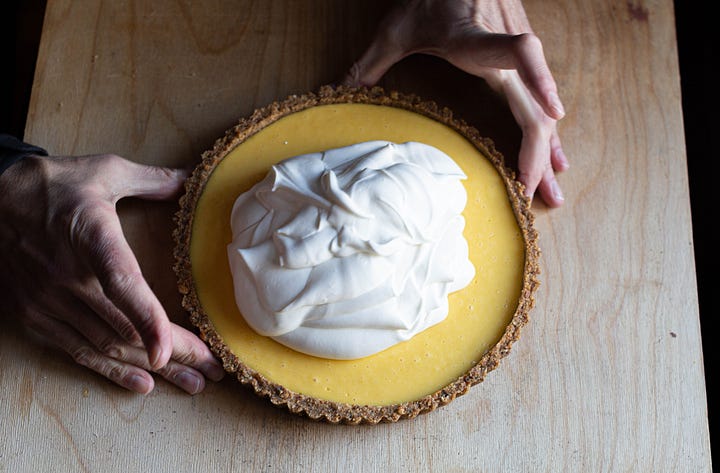
Heavy cream, 240g, (1 cup)
Confectioners sugar, 16g (2T)
Sour cream, 230g, (1 cup)
To serve, whip the heavy cream with the confectioners sugar until peaks form. Whisk in the sour cream, mixing until homogenous. Top the pie and garnish with coarse salt and additional lemon or lime zest. (Credit to Alison Roman for the idea to cut the whipped cream with sour cream — it’s what she does with her key lime pie. Brilliant!)
Happy baking, y’all. Thanks for reading.
Martin
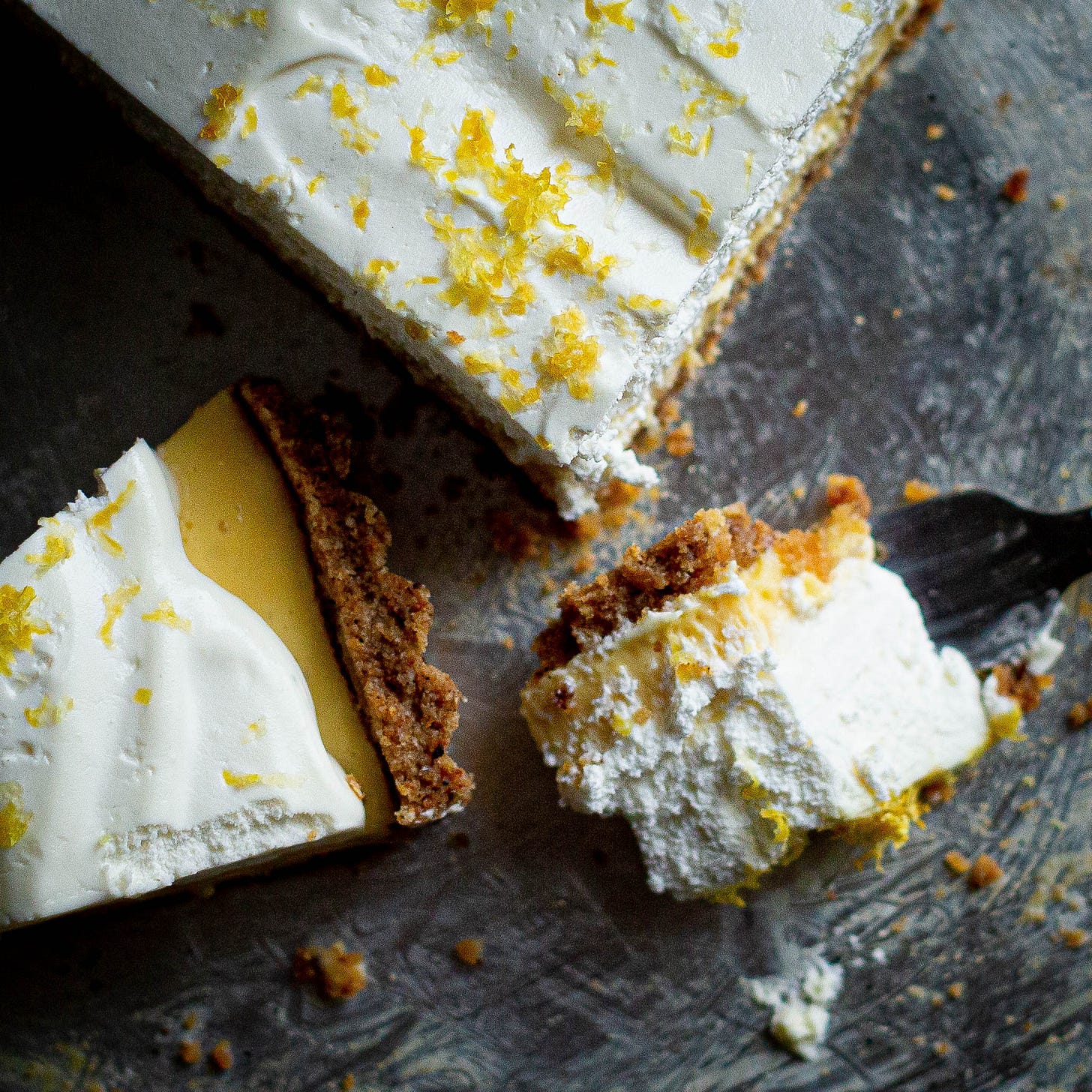

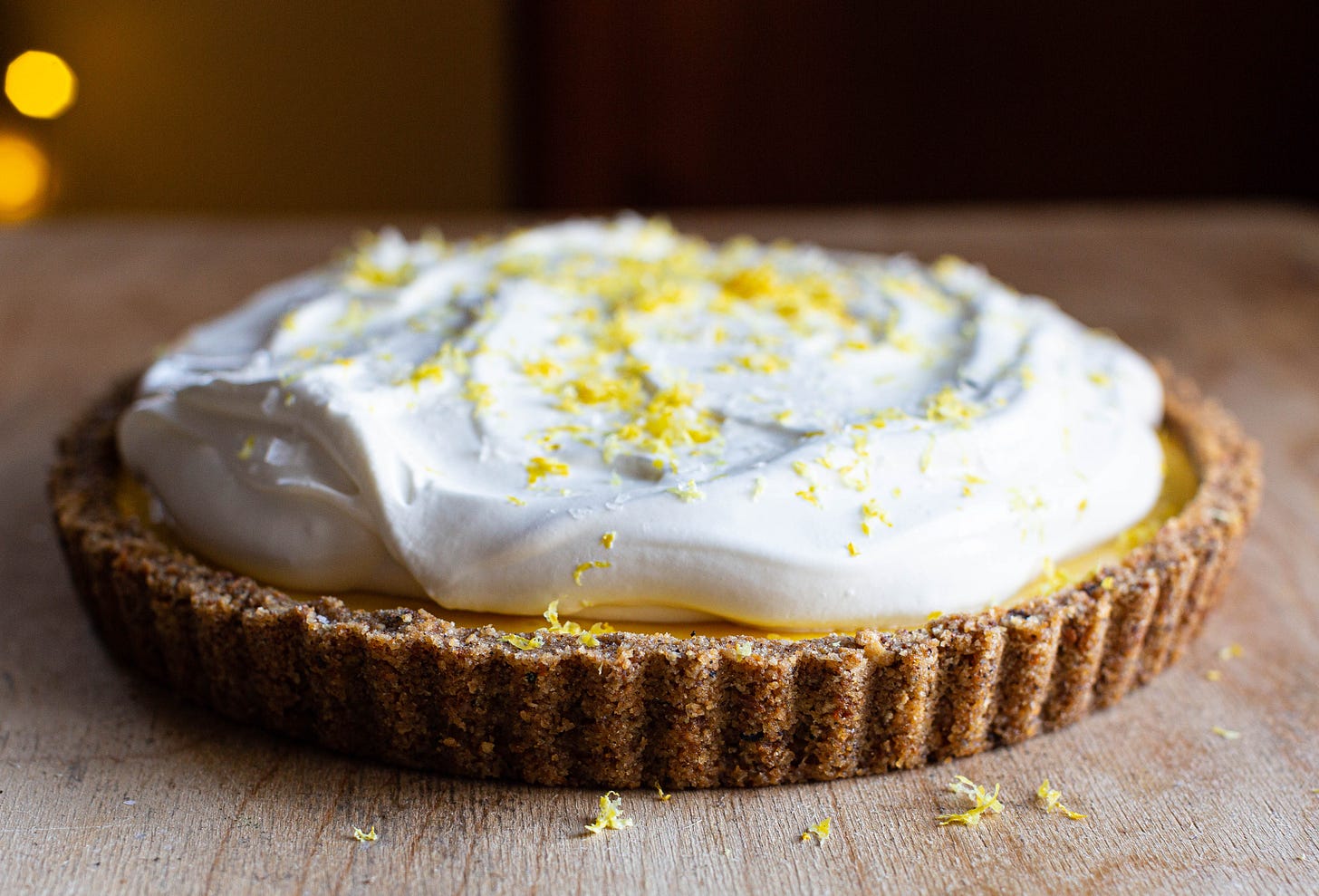
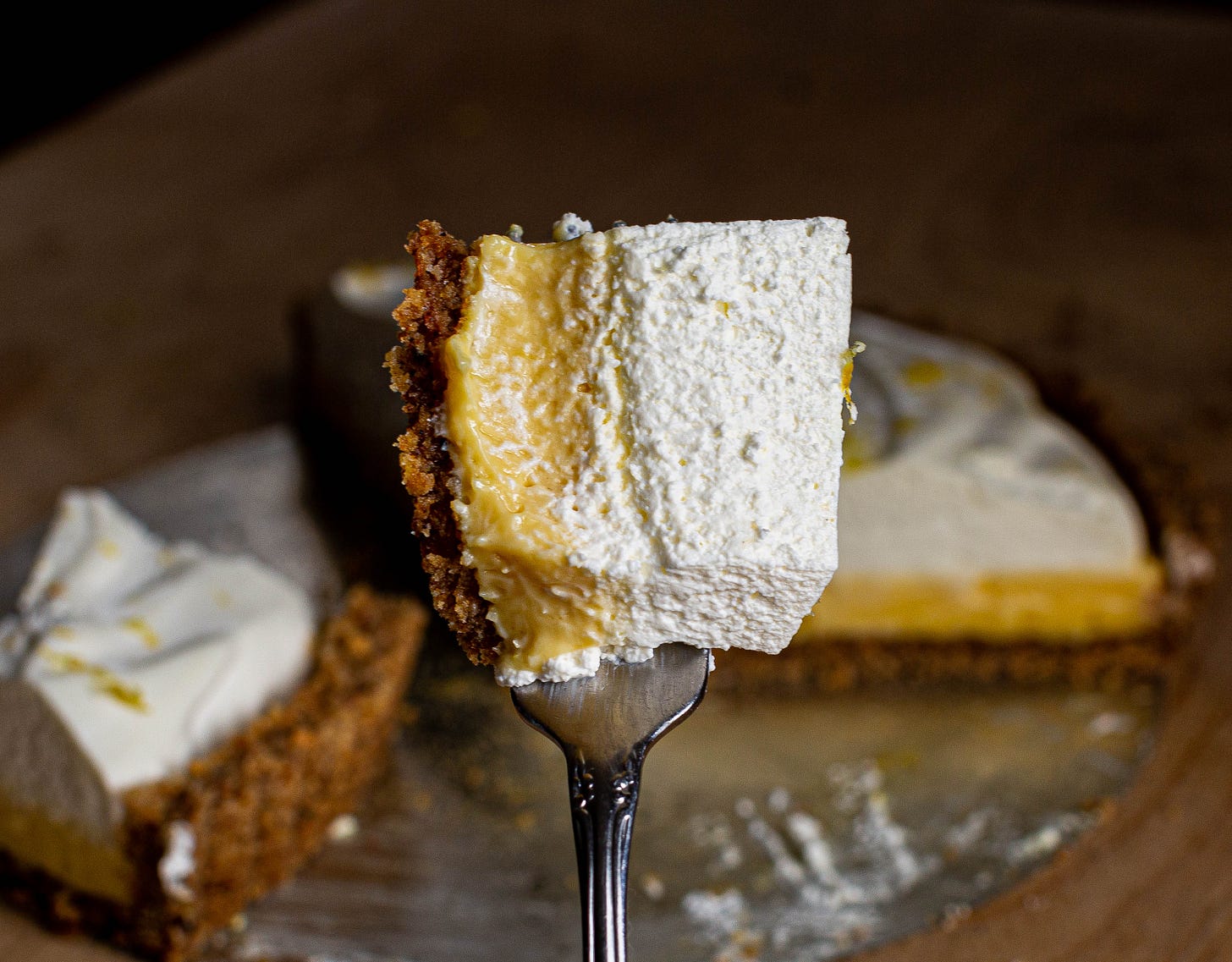
This pie is cooling beside me as I type, a wee little sun, just as the western sun beams in, a surprise break from the relentless hammering we've been getting in the Bay Area. Just Bread and Maura's Bread (w/ your quantity tweaks, my new ritual, game-changing, genius) meeting the finest end a loaf of bread could hope for. So grateful for another lovely recipe and for all the testing you (& fam) do before sharing, Martin.
I love finding new ways to use up bits of leftover food and I’ve never thought to make a pie crust of breadcrumbs, brilliant!